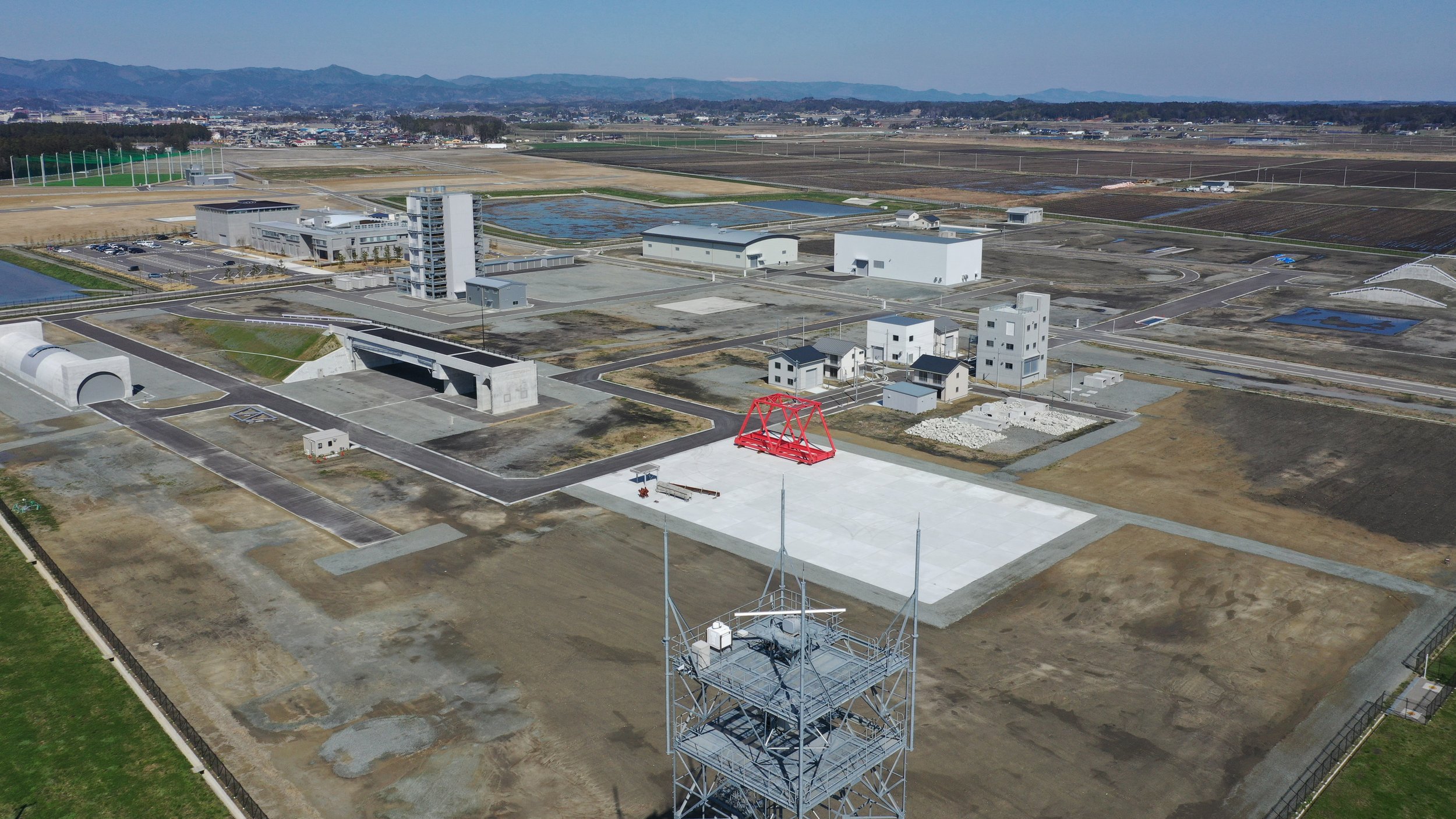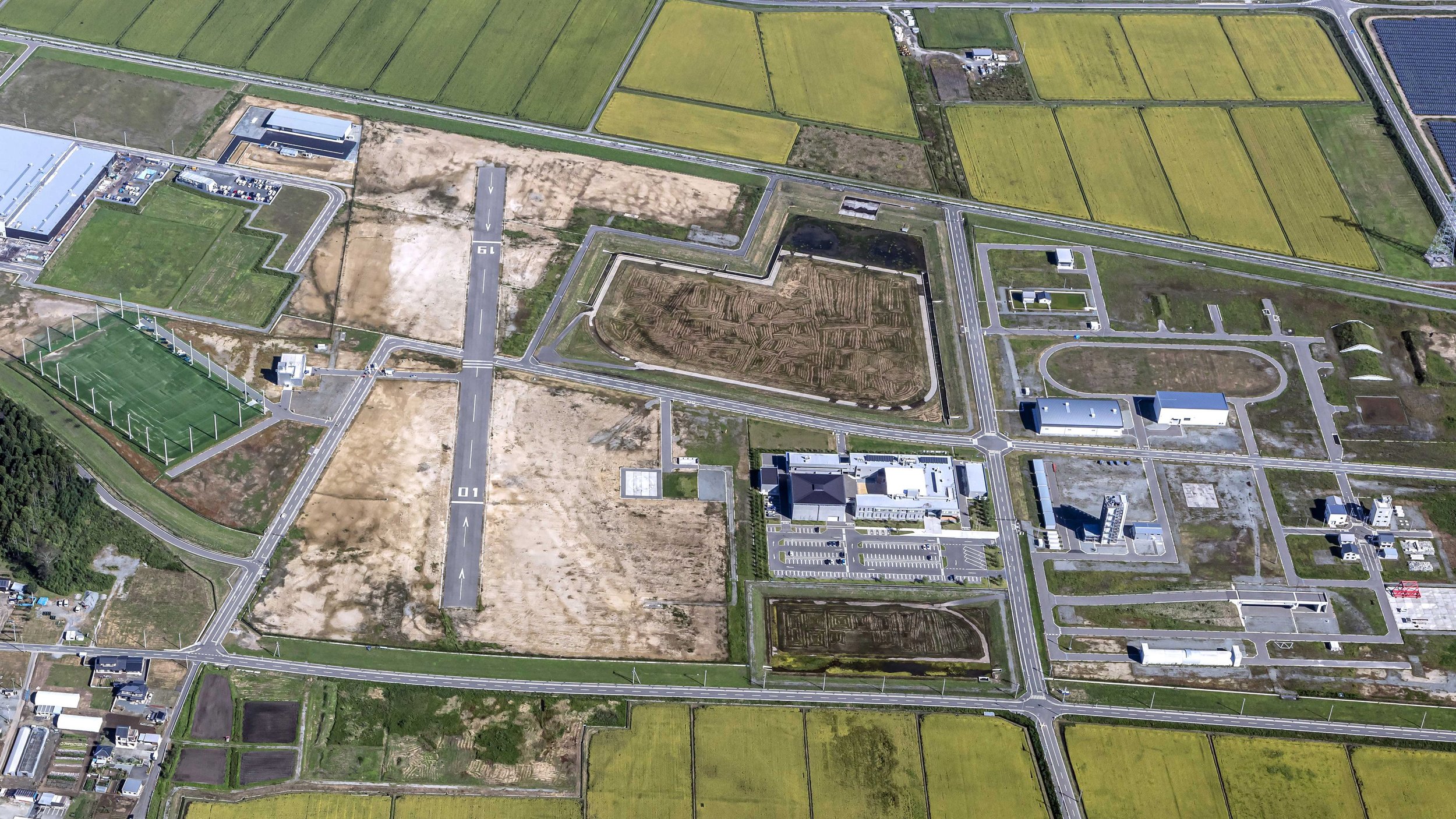From Disaster to Tech Hub
Soon after the Great East Japan Earthquake of March 11, 2011, Japan’s Ministry of Economy, Trade and Industry (METI) began coordinating a wide range of efforts to revitalize this former disaster zone. METI’s revitalization initiatives were raised to a new level with the launch of the Fukushima Innovation Coast Framework in May 2017. Here’s how things are developing five years on.
The bold ambitions of Japan’s Fukushima Innovation Coast Framework
Listen to this story:
For his first-ever trip to Japan, in 2011, Warren Buffett chose to visit Iwaki City, Fukushima Prefecture. What attracted the world’s most celebrated investor to a former mining community of some 300,000 residents far away from the bright lights of Tokyo? The Sage of Omaha came in person to show his support for Tungaloy Corporation, a leading maker of cutting tools. Tungaloy also happens to be owned and operated by a company led by Buffett. Just a few months after the Great East Japan Earthquake of March 11, 2011, devastated much of the surrounding region, Buffett stood in front of Tungaloy’s Iwaki headquarters holding a sign that read, “Never give up, Fukushima!” The act underscored his commitment to the company, its employees, and the community that hosts them.
Tungaloy President Satoshi Kinoshita explained: “Companies are only as good as their people. The workers here in Iwaki City are bright, diligent, and ambitious. They are filled with creative ideas. This wealth of local talent on our doorstep—combined with very supportive local communities and government agencies—makes the case for investing in Fukushima so compelling.”
Fukushima Reimagined
Iwaki City is just one of a string of towns and cities in the Hamadori area, Fukushima Prefecture’s coastal region facing the Pacific Ocean which was hardest hit by the earthquake, tsunami, and nuclear disasters. Soon after the catastrophe, the Ministry of Economy, Trade and Industry (METI) began coordinating a wide range of efforts to revitalize this former disaster zone. METI’s revitalization initiatives were raised to a new level with the launch of the Fukushima Innovation Coast Framework in May 2017. Under the framework, the ministry is attracting innovators in six core sectors through financial and other types of aid. The core sectors include:
- Decommissioning
- Robotics and drones
- Energy, environment, and recycling
- Agroforestry and fisheries
- Medical care
- Aerospace
Future Tech Hub
In the 11 years since the earthquake, recovery has focused on restoring businesses to their original locations in Fukushima through business and livelihood restoration efforts; but that doesn’t provide a vision of Fukushima’s future. The Fukushima Innovation Coast Framework aims for “creative reconstruction” by developing new industries in the prefecture’s coastal region.
“As we attract outside companies, we also want locals to restart their businesses. True creative reconstruction is only realized once local companies successfully mesh with new partners and drive the creative cycle,” explained Masami Miyashita, director of METI’s Fukushima New Industries and Employment Promotion Office.
A Leg Up for Robotics
One of the cutting-edge research and development facilities is the Fukushima Robot Test Field. It offers experimental equipment and development facilities such as tunnels, bridges, and runways for aircraft to test the performance of robots for infrastructure inspection and communication towers for drones.
Sou Yanbe, growth manager of the venture capital Real Tech Fund, explained: “Test environments that can assess the durability of devices are indispensable for the commercial rollout of hardware such as robots and drones. But most startups can’t afford to own and operate the facilities needed to conduct these tests. Robotics startups aiming for mass production should first consider setting up a base in the Hamadori area of Fukushima.”
Big Hydrogen Plants
Take for example the small community of Namie, which has been reimagined as Hydrogen Town Namie and houses one of the world’s largest-capacity hydrogen plants: Fukushima Hydrogen Energy Research Field. Sucking up an enormous amount of energy generated by solar panels, the field applies this solar energy to produce enough hydrogen fuel daily to power about 150 households or to fully charge 560 fuel-cell vehicles.
In response to the national government’s 2050 Carbon Neutral Declaration, which is expected to encourage even further the introduction of renewable energy in Japan, Namie has declared itself a zero-carbon city, aiming to achieve virtually no carbon dioxide emissions by 2050. While this will promote the generation and use of renewable energy, the key to achieving their 2050 goal is found in the “create local, use local” strategy for clean Namie hydrogen produced at the Fukushima Hydrogen Energy Research Field.
Fixed-wing drones will scan disaster-struck areas.
Drones to the Disaster Response
Meanwhile, the startup Terra Labo is addressing the other side of the coin: disaster preparedness. Investing just over $2 million to build a research, development, and manufacturing hub next to Fukushima Robot Test Field, Terra Labo Chief Executive Officer Takahide Matsuura aims to develop and commercialize long-range, unmanned drones by the end of 2023.
Matsuura envisions a disaster management system where fixed-wing drones capable of long-distance flight share images and 3D models generated from aerial surveying with a special analysis team, which then passes them on to government bodies.
“No other facility is so well equipped with not only an airfield and testing facilities, but also ancillary facilities,” Matsuura said, noting how critical the facilities are to his vision. “This makes it ideal for a development-centered company. It must not have been easy to secure the site.”
Engaging Education
But it’s not all billionaires, venture capitalists, and entrepreneurs. The next generation of Fukushima residents is just as involved. In the classroom of a local school, children’s eyes light up when one palm-sized robot bows. The robot attracting their attention is the Aruku Mechatro WeGo, designed to help children learn programming. Classes such as these are held regularly in Fukushima for elementary and middle school students with the hopes that some will grow up to be the innovators of the future. And perhaps, in the years to come, one of Buffett’s successors will visit Fukushima and be inspired by local creativity and entrepreneurship to invest more in the vibrant Fukushima of the future.
Children interact with the Aruku Mechatro WeGo robot.







